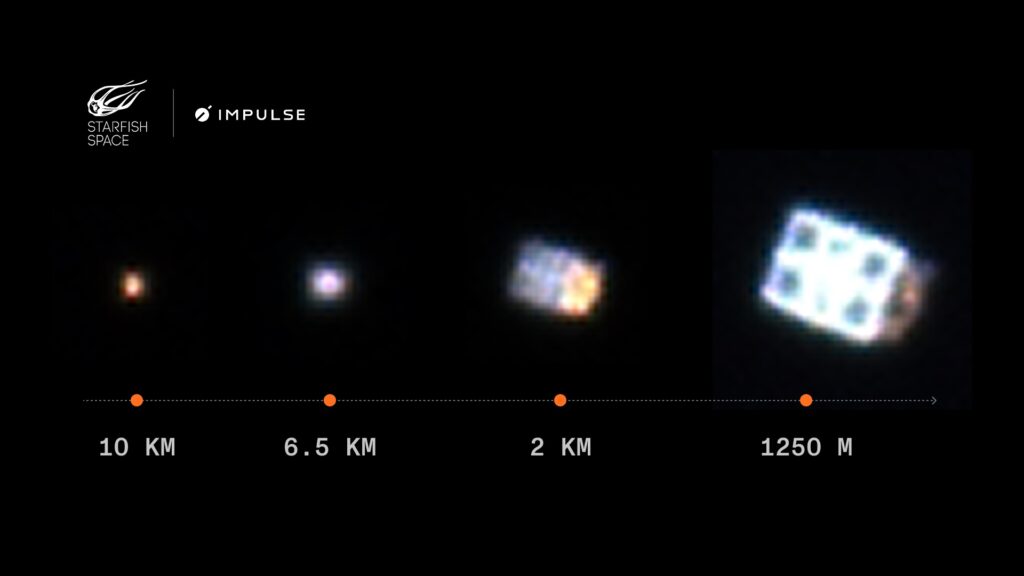Now Reading: Satellite firms brace for potential imagery budget cuts in 2026
-
01
Satellite firms brace for potential imagery budget cuts in 2026
Satellite firms brace for potential imagery budget cuts in 2026

ST. LOUIS — The National Reconnaissance Office has privately warned its commercial satellite imagery providers of potential funding cuts that could slash as much as one-third from the previously projected $450 million commercial imagery budget for the upcoming fiscal year, industry and congressional sources told SpaceNews.
The issue came to light last week during a House Armed Services Committee hearing when Rep. Seth Moulton (D-Mass.), ranking member on the Strategic Forces subcommittee, referenced “rumors” that the NRO had been directed by the White House Office of Management and Budget to scale back commercial imagery funding in its upcoming budget request.
A congressional committee source, speaking on condition of anonymity, confirmed that a 30% reduction in commercial imagery spending being sought by the administration is consistent with the information Moulton referenced during the hearing.
The NRO did not respond to a request for comment on the projected cuts.
Cuts of this magnitude would be a stunning reversal of policy, according to multiple industry executives who spoke with SpaceNews during this week’s GEOINT Symposium and requested anonymity to discuss sensitive government contracting issues.
The administration’s public rhetoric about leveraging commercial capabilities doesn’t align with what the industry is hearing about these budget plans, these executives said.
The potential cuts would impact providers who are part of the Electro-Optical Commercial Layer (EOCL) contract — a nearly $4 billion, 10-year initiative launched in 2022 that represents the NRO’s largest-ever commercial imagery deal. Under that arrangement, Maxar Technologies secured the majority share, with BlackSky and Planet Labs receiving smaller portions.
The EOCL program enables the Department of Defense, intelligence agencies and other federal organizations to access high-resolution, electro-optical imagery from private satellite constellations, providing critical visibility for national security and disaster relief operations. While the contract spans a decade, funding requires annual congressional approval, leaving it vulnerable to budget pressures.
Conspicuous absence
NRO officials were notably absent from the 2025 GEOINT Symposium program — a forum traditionally used to announce expansion of commercial-imagery procurement. In previous years, the event has served as a platform for the agency to highlight its commitment to leveraging private sector innovation.
The uncertainty extends beyond visual electro-optical imagery. Companies specializing in synthetic aperture radar (SAR) — technology that can capture imagery through clouds and darkness — also face funding incertitude.
Commercial SAR capabilities gained prominence following Russia’s invasion of Ukraine, where their all-weather imaging proved invaluable for monitoring Russian troop movements even in cloudy conditions. At last year’s GEOINT, the NRO signaled plans for a dedicated “radar commercial layer” procurement similar to EOCL, though likely at a smaller scale.
Industry executives, who have been waiting for this procurement to move forward, now question whether it will happen, or when. SAR companies continue to benefit from supplemental funding for Ukraine and Gaza operations but also were counting on a sustained program of record.
Contradiction with stated policies
The potential cuts have left industry executives puzzled, given the Trump administration’s repeated emphasis on leveraging commercial space technologies rather than developing government-owned systems.
The president issued an executive order directing agencies to buy commercial capabilities where available instead of building their own. Several industry officials questioned the rationale for funding cuts to commercial imagery in light of this latest policy.
The situation is particularly concerning in the context of technological competition with China, another official said, as the U.S. commercial space sector represents a strategic advantage that could be undermined without consistent government support.
Government demand signals are what drive private investment, an industry official said. If that signal becomes erratic, the sector could struggle to attract venture capital.
Congressional push
Satellite imagery companies are now preparing a coordinated messaging campaign targeting both administration officials and key congressional committees, which have historically added funding for commercial satellite imagery above administration requests.
For publicly traded companies, the stakes extend beyond government contracts to their stock market performance. Investors get spooked by rumors of major cuts, explained one executive.
Congress is expected to, once again, supplement administration requests. But executives stress that such add-ons, while welcome, don’t provide the predictable funding streams needed for long-term planning and continued private investment in capabilities that serve both commercial and national security interests.
Stay Informed With the Latest & Most Important News
Previous Post
Next Post
-
 012024 in Review: Highlights from NASA in Silicon Valley
012024 in Review: Highlights from NASA in Silicon Valley -
 02Panasonic Leica Summilux DG 15mm f/1.7 ASPH review
02Panasonic Leica Summilux DG 15mm f/1.7 ASPH review -
 03From Polymerization-Enabled Folding and Assembly to Chemical Evolution: Key Processes for Emergence of Functional Polymers in the Origin of Life
03From Polymerization-Enabled Folding and Assembly to Chemical Evolution: Key Processes for Emergence of Functional Polymers in the Origin of Life -
 04How New NASA, India Earth Satellite NISAR Will See Earth
04How New NASA, India Earth Satellite NISAR Will See Earth -
 05And Thus Begins A New Year For Life On Earth
05And Thus Begins A New Year For Life On Earth -
 06Astronomy Activation Ambassadors: A New Era
06Astronomy Activation Ambassadors: A New Era -
07SpaceX launch surge helps set new global launch record in 2024




















